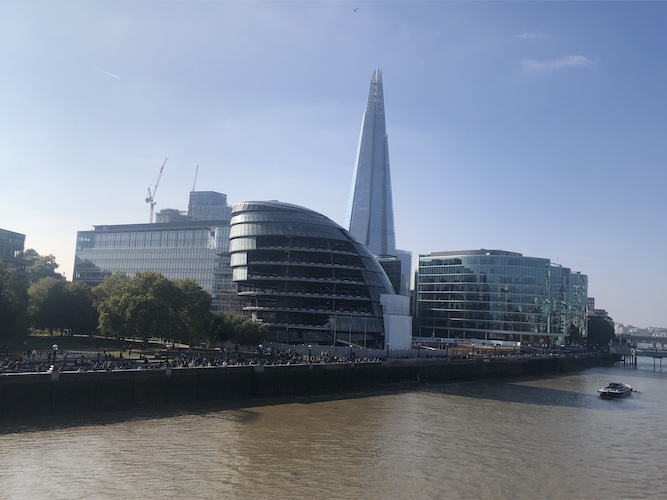For a beacon of London pride and innovation, the original City Hall building had a short and rather disappointing life doing the job it was made for. The Mayor, the London Assembly and the rest of the Greater London Authority (GLA) didn’t move in to the Foster and Partners globular creation until July 2002, more than two years after the first elections to the institution. And by the end of 2021, everybody had moved out again.
True, images of Gensler’s retail and office makeover plans look nice, with lots of greenery on open balconies. And the landmark novel shape next to Tower Bridge will endure. But could and should things have been done differently?
Sir Sadiq Khan’s decision to move the GLA across the Thames to the Crystal building, next to the Royal Victoria Dock in Newham, was justified on cost-saving grounds and with claims that it would be a catalyst for regeneration, just as the Old City Hall (as it is now generally known) was – veteran of its early time recalls “there wasn’t even a cash point round there, let alone a sandwich shop”.
People, including Mayors Livingstone and Johnson, said rude things about it. There were problems with mice, and cleaning its 3,000 panes of glass was not cheap. But its topmost floor, London’s Living Room, was spaciously municipal with fabulous views, its mauve debating chamber combined modernity with gravitas, and the wonky dome as a whole had a presence the new City Hall lacks.
It felt wrong that, at a time when the Conservative national government was exploiting the pandemic to belittle the mayoralty and its Labour incumbent, Mayor Khan himself seemed to collude in the diminution of the office. And although it was hard to argue against his case that relocating would save money at a time when budgets were under strain, there are those who believe he and his team had better options.
The decision came about because the GLA’s lease with the building’s owner, St Martins Property Investments Ltd – basically, the UK wing of Kuwait’s real estate operations – contained a break clause, meaning that either or both parties to the agreement could opt out of it early. The GLA, the argument goes, was in a position to negotiate a much lower rent, possibly no rent at all for a time, and stay put, but chose not to.
Why might St Martins have agreed to such terms? Simply because having a prestigious government institution in the area would have been worth money to them, even if it wasn’t handing any over. St Martins owns the entire 13-acre More London estate on which Old City Hall – nowadays officially 110 The Queen’s Walk – stands, along with a cluster of adjacent offices whose occupiers include prestigious firms such as PwC, Ernst & Young and Jacobs Engineering. In the view of a former senior GLA official, the “wider value” to St Martins, which bought More London in 2013, of having the GLA on its territory was considerable: “PWC et al are clearly paying more rent because of that proximity.”
The GLA’s bargaining power was the greater due to the very fact that the building was bespoke, put together solely to provide a home for the brave, new tier of London regional government created by Tony Blair’s Labour. Finding an alternative tenant (or tenants) was always going to be difficult, if not impossible. Under this scenario, the GLA would have saved more money than it claimed it was going to by moving to the Crystal, which also turned out to need a lot of fixing up. There had been prior suggestions that the Crystal site could be redeveloped for housing. Might that have been a better outcome, too?
If such an alternative approach was considered, it clearly was not pursued. Leadership and vision went “missing in action,” according to one displeased observer. Left with what had become an irregular white elephant, St Martins decided it was better to have it reinvented than wait forever to re-fill it in its original form.
I’m sentimental about the place in general – not just Old City Hall itself, where I spent many hours observing all three London Mayors, but the nearby fountains where my children, when they were small, frolicked in the summer, and Thames Festival performances at The Scoop. I still miss the Rill, the little waterway that ran down More London Place before, in 2018, More London filled it in. But there it is. The city moves on. Here’s hoping for the best.
Follow Dave Hill on Bluesky.
OnLondon.co.uk provides unique coverage of the capital’s politics, development and culture with no paywall and no ads. Nearly all its income comes from individual supporters. For £5 a month or £50 a year they receive in-depth newsletters and London event offers. Pay via any Support link on the website or by becoming a paying subscriber to publisher and editor Dave Hill’s Substack.

